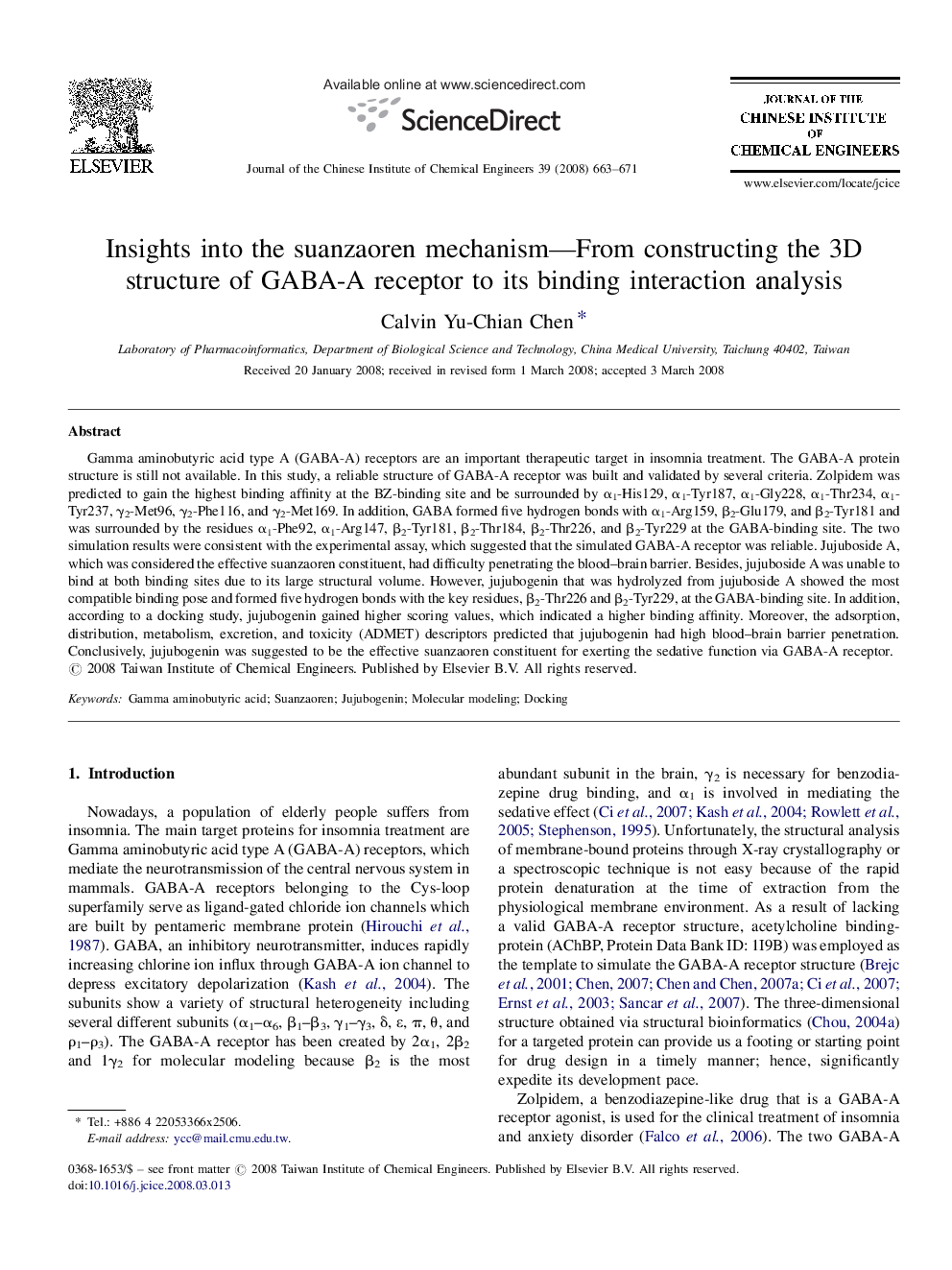| Article ID | Journal | Published Year | Pages | File Type |
|---|---|---|---|---|
| 217660 | Journal of the Chinese Institute of Chemical Engineers | 2008 | 9 Pages |
Gamma aminobutyric acid type A (GABA-A) receptors are an important therapeutic target in insomnia treatment. The GABA-A protein structure is still not available. In this study, a reliable structure of GABA-A receptor was built and validated by several criteria. Zolpidem was predicted to gain the highest binding affinity at the BZ-binding site and be surrounded by α1-His129, α1-Tyr187, α1-Gly228, α1-Thr234, α1-Tyr237, γ2-Met96, γ2-Phe116, and γ2-Met169. In addition, GABA formed five hydrogen bonds with α1-Arg159, β2-Glu179, and β2-Tyr181 and was surrounded by the residues α1-Phe92, α1-Arg147, β2-Tyr181, β2-Thr184, β2-Thr226, and β2-Tyr229 at the GABA-binding site. The two simulation results were consistent with the experimental assay, which suggested that the simulated GABA-A receptor was reliable. Jujuboside A, which was considered the effective suanzaoren constituent, had difficulty penetrating the blood–brain barrier. Besides, jujuboside A was unable to bind at both binding sites due to its large structural volume. However, jujubogenin that was hydrolyzed from jujuboside A showed the most compatible binding pose and formed five hydrogen bonds with the key residues, β2-Thr226 and β2-Tyr229, at the GABA-binding site. In addition, according to a docking study, jujubogenin gained higher scoring values, which indicated a higher binding affinity. Moreover, the adsorption, distribution, metabolism, excretion, and toxicity (ADMET) descriptors predicted that jujubogenin had high blood–brain barrier penetration. Conclusively, jujubogenin was suggested to be the effective suanzaoren constituent for exerting the sedative function via GABA-A receptor.
